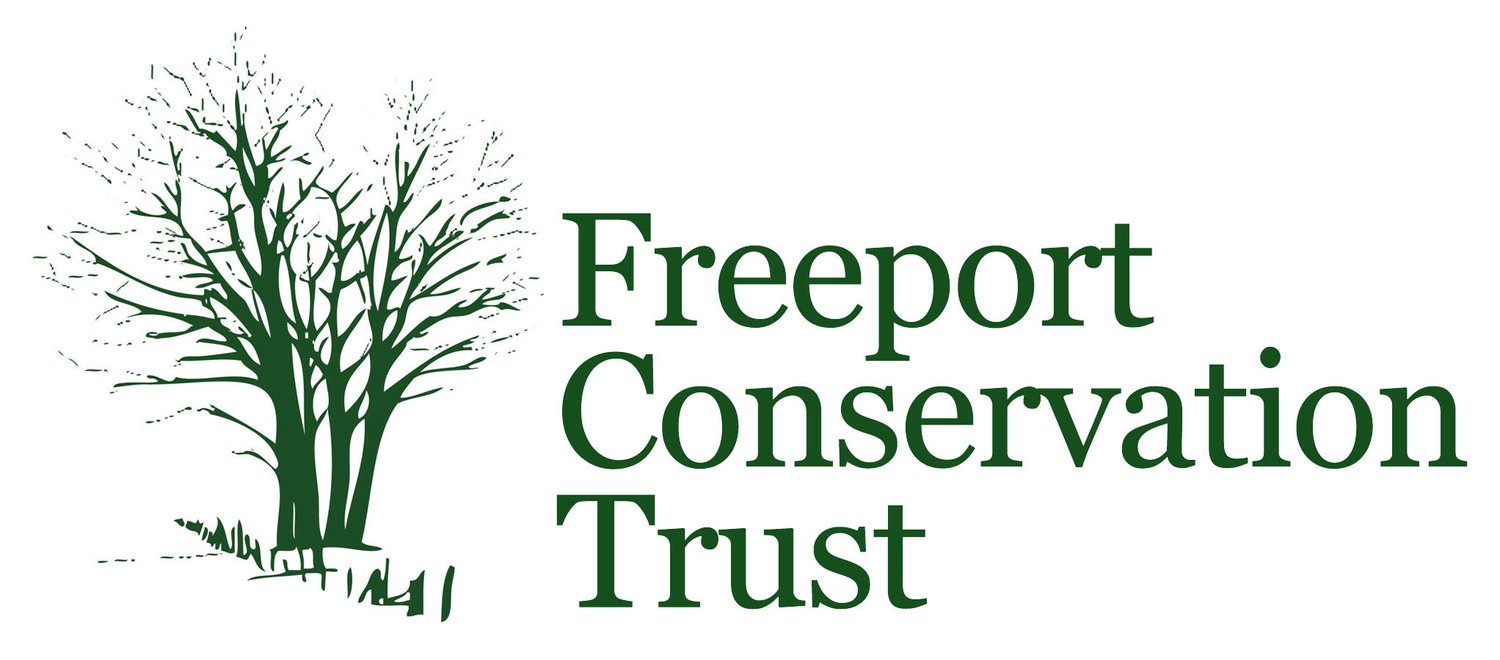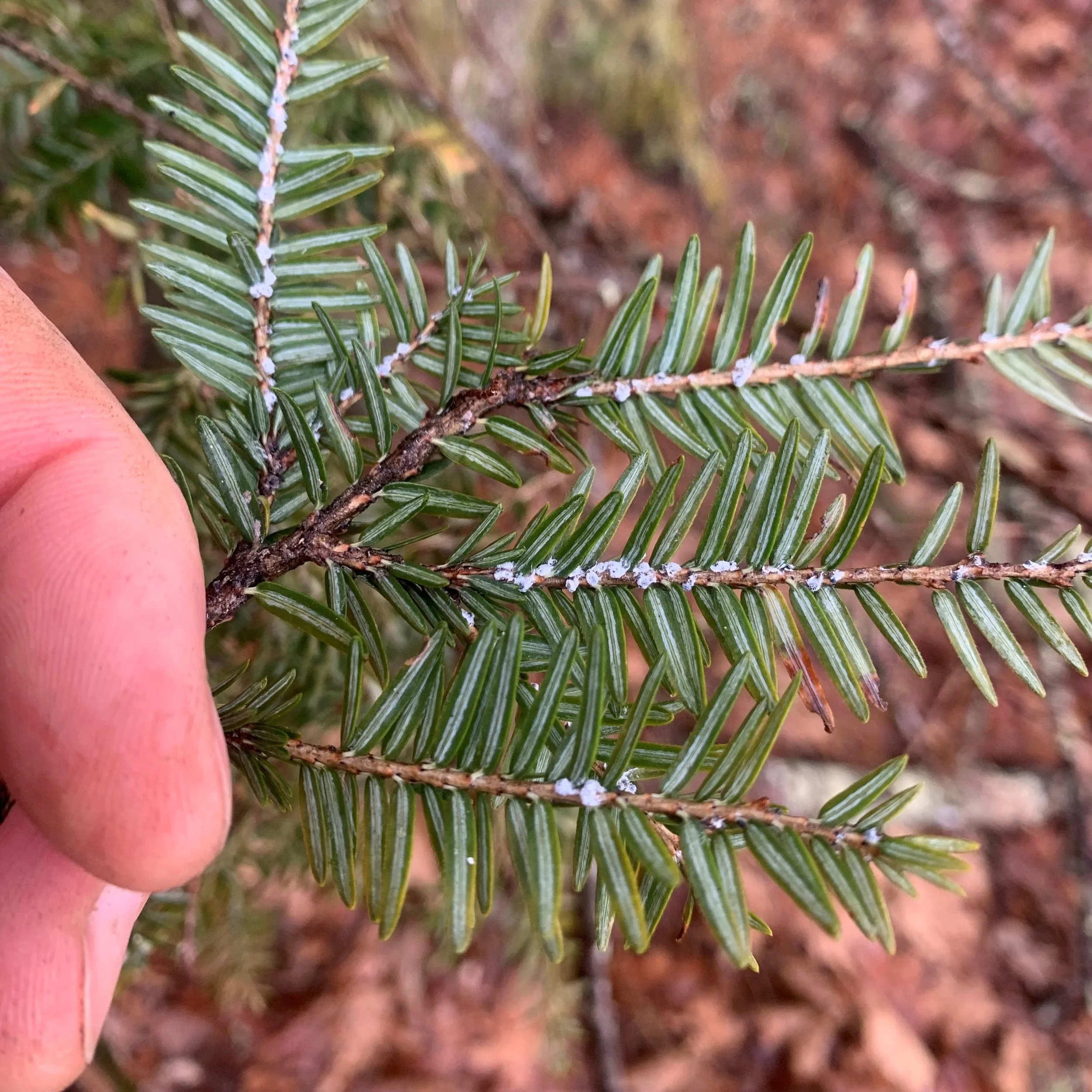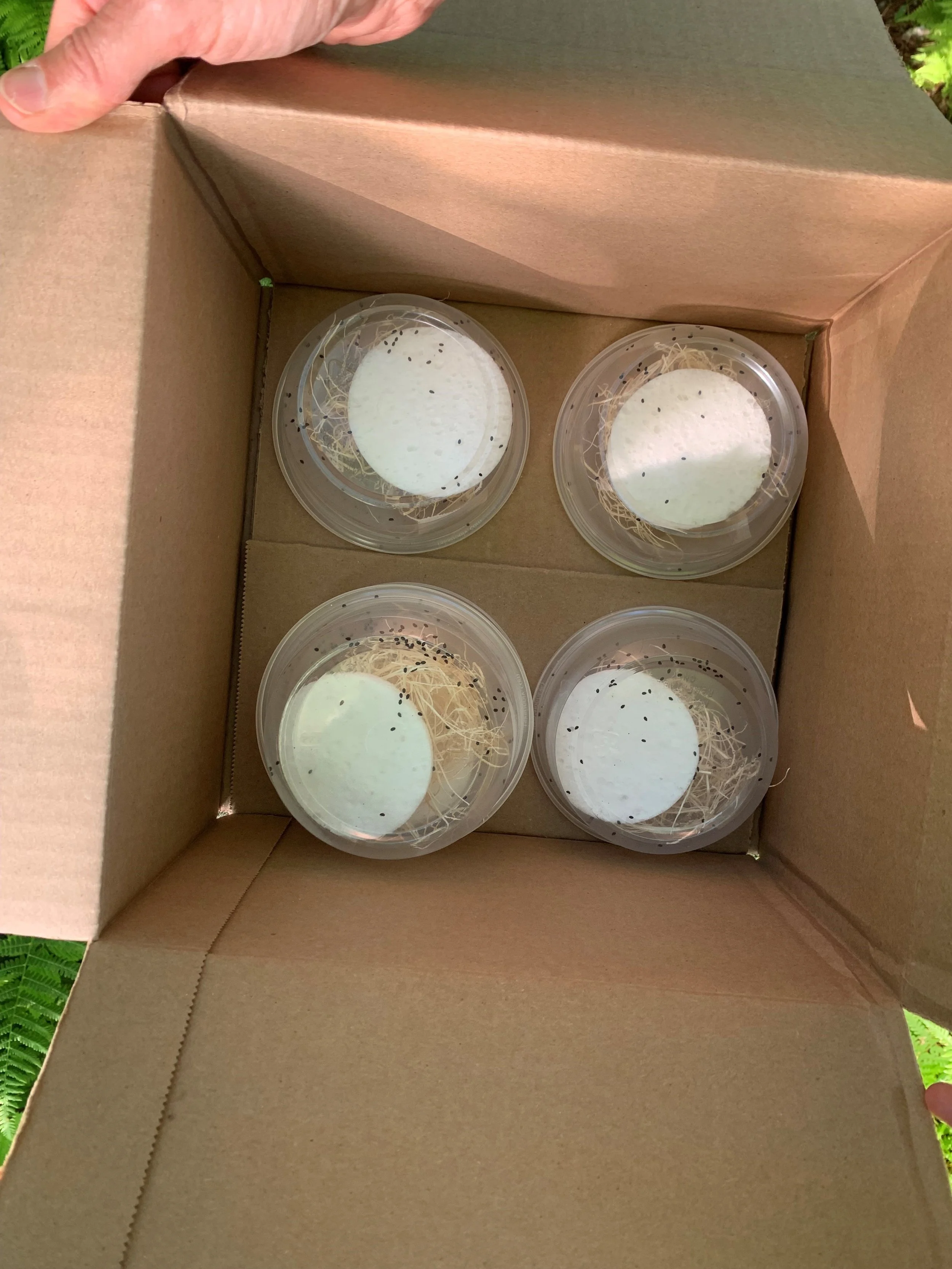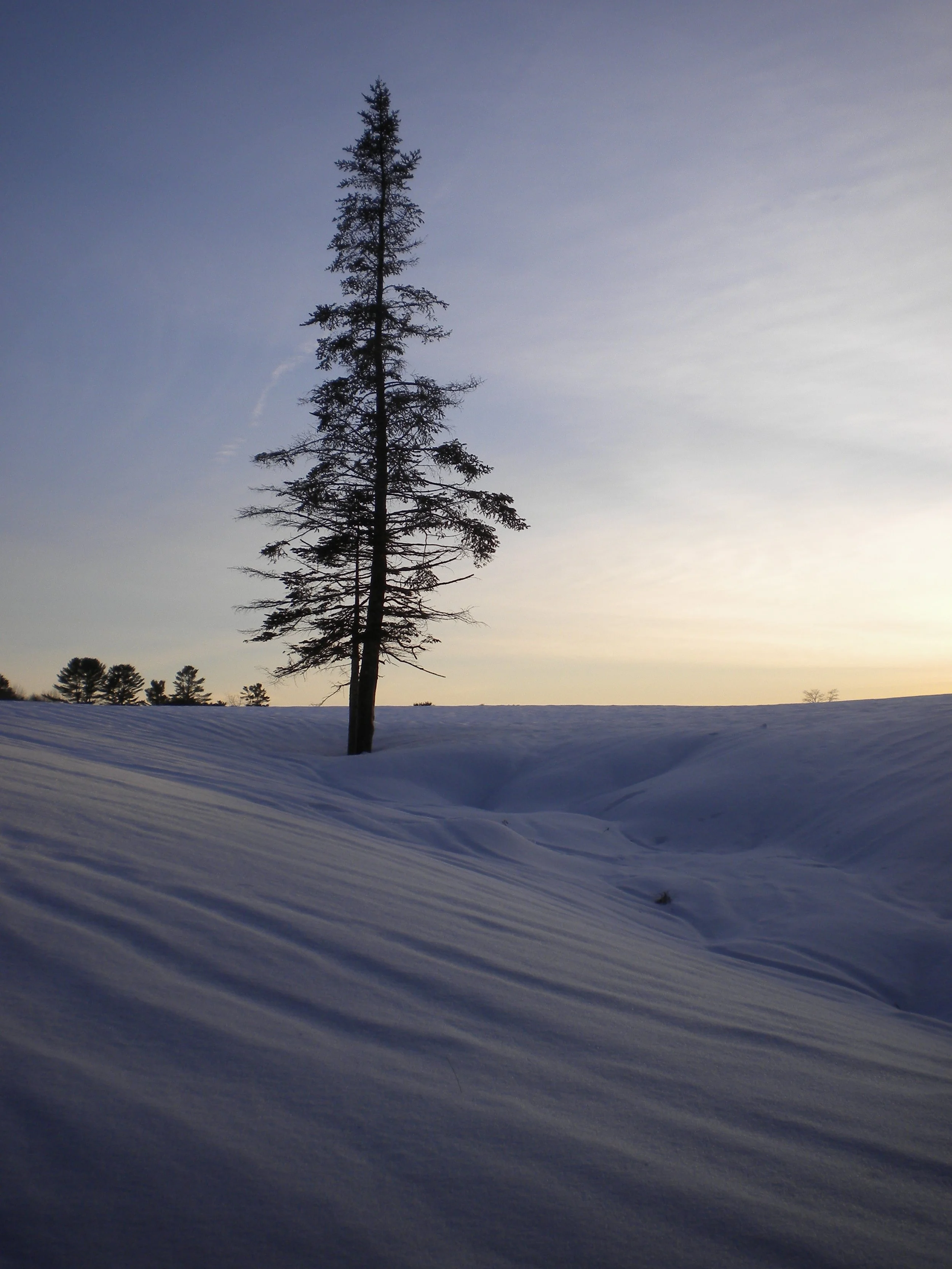Protecting Freeport’s Forests,
One Hemlock at a Time
Hemlock Woolly Adelgid is threatening many of Maine’s ecosystems, and will only worsen as climate change continues
The Importance of Hemlocks
Hemlocks are considered a keystone species, meaning they are essential for supporting ecosystems. Growing up to 100ft tall and 3ft in diameter, these steadfast trees can live to 800 years. Their branches provide dense shade that protects soil from the sun, creates a habitat for animals, and support various species—including lichens, mosses, ferns, barred owls, salamanders, frogs, and wrens. You may recognize the hemlock and the species it helps protect out on our trails!
What is Hemlock Woolly Adelgid (HWA)?
HWA (scientific name: Adelges tsugae) is a tiny insect native to Japan, where it fits into an ecosystem without taking it over. However, here in the Eastern United States, other species have not co-evolved alongside HWA, so there are no predators that keep it in check. This pest lays its eggs on the underside of hemlock trees, producing a dry, white, woolly protective layer over its eggs. They remain active in the winter, taking advantage of the hemlock’s increased energy intake. When the eggs hatch, they crawl to the base of needles to extract starch and nutrients from the tree, whose branches are then deprived and die off. HWA makes hemlock appear sickly, with grey bark, a weak canopy, and dying lower branches. Trees can die anywhere from two to twenty years after infestation.
What does FCT do?
At FCT, we take our responsibility to our land seriously—we are always on the lookout for new ways to be better stewards. We’re combatting Hemlock Woolly Adelgid with Japanese lady beetles (scientific name: Sasajiscymnus tsugae), which are a natural predator of HWA but don’t eat anything else in the New England landscape. This makes them a perfect form of biological control that won’t do further harm to ecosystems as well as providing an alternative to chemical treatments and pesticides.
On May 31, 2024, FCT released the first beetle distribution in a collaboration with Brunswick-Topsham Land Trust. The critters went out at Frost Gully and Sayles Field. In the spring of 2025, Freeport High School students in the Gulf of Maine Field Studies program partnered with us to receive another beetle shipment, which was released at Powell Point and Brimstone on June 20, 2025. We are so grateful to be connected with the wonderful Field Studies program and the passionate Freeport High School members who made this project happen with us. Check out our social media for pics!
What can I do at home?
The Japanese beetles used for biocontrol are non-native to Maine—they are reared in only two places in the United States, the closest being in Pennsylvania. They are not easily accessible and each colony has an associated cost. Committing to a purchase includes the commitment to being available for receiving the delivery and releasing the beetles same-day. If you are a landowner interested in purchasing predatory beetles to protect your hemlocks, please contact us.
You can send us a message here or call us at (207)865-3985 ext. 212.
Japanese beetles just before release
Japanese beetles in their organic packing materials, clipped to a hemlock branch
Watch our video of the June 2025 beetle release here!
A box of the Japanese beetle colonies
Japanese beetles in their original container, before release
Want to know more?
“HEMLOCK WOOLLY ADELGID Adelges tsugae (Annand)”, Maine Forest Service
“Hemlock Woolly Adelgid”, Cornell Cooperative Extension
“Biocontrol of Hemlock Woolly Adelgid”, Saving Hemlocks
Read about our collaboration with the Brunswick-Topsham Land Trust here!
“Hemlock Woolly Adelgid meets its foe”, Portland Press Herald









